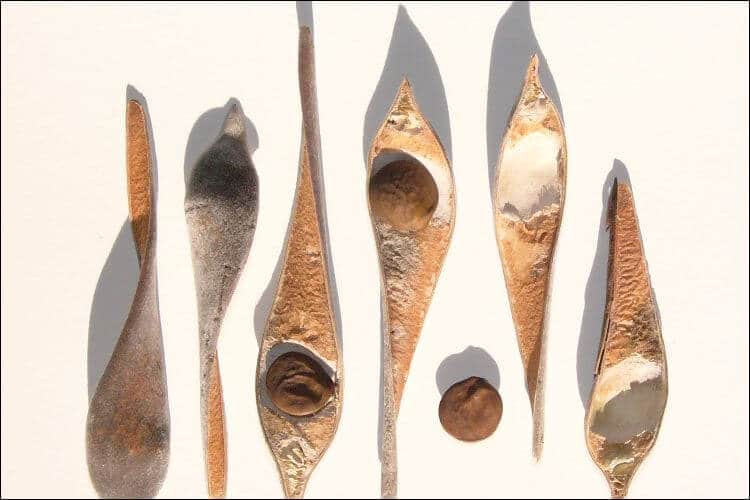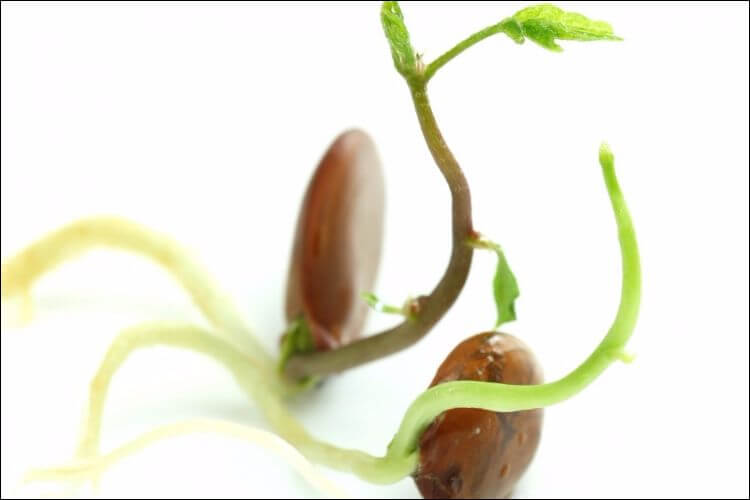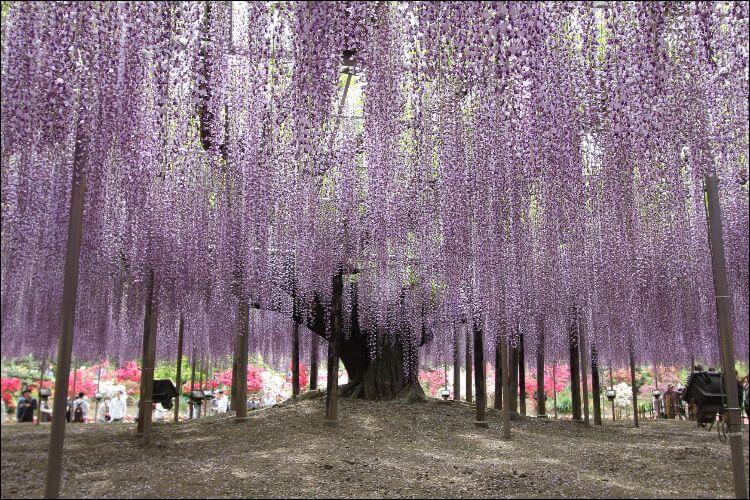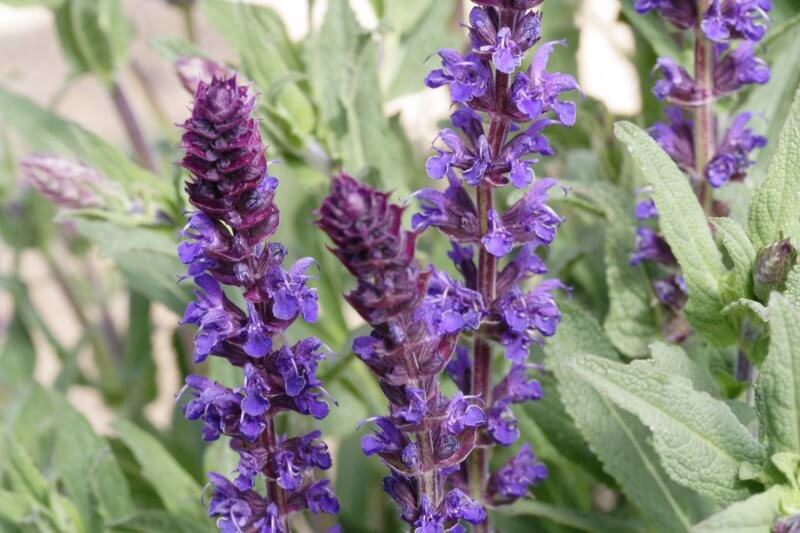If you’ve ever seen a woody vine with big, beautiful flowers, then you know what wisteria looks like. It’s the first choice for the typical English cottage garden and it’s most appreciated in spring when it blooms. It can be quite complicated to grow one, but the results are worth it. Today we are going to find out more on how to grow wisteria from seed and what requirements does this amazing plant have.
Before Planting
1. Choosing a Wisteria
You can find plenty of places where they have wisteria seeds for sale, but if you decide to buy the seeds or the entire plant you should pay attention to it. It’s important that it’s grafted since usually, a seed-raised wisteria can flower in 20 years or even more. If it’s a grafted plant, you only need to wait 1-2 years.
Luckily, you can find plenty of cultivars available on the market. However, two of the species are most common: Wisteria floribunda (Japanese wisteria) and Wisteria sinensis (Chinese Wisteria). Here’s how to tell them apart:
- W. Sinensis – The flowers appear before the foliage and have a length of 23 – 30 cm (9 – 12 inches). Moreover, the stems twine anti-clockwise.
- W. floribunda – Its flowers appear simultaneously with the foliage, reaching a length of 30 – 45 cm (12 – 18 inches). The stems twine clockwise.

2. Choosing the Location
Location is an essential factor to consider when learning how to grow wisteria from seed. Usually, this plant is long-lived. Moreover, it forms some woody stems that, in time, will need support. This means it’s difficult to move it once you planted it. At the same time, another important requirement for it is pruning, so you need to access it easily and quickly. But more about pruning later.
The ideal place for a wisteria is a sunny site, or at least a semi-shaded one. The soil needs to be moist and well-drained. The wisteria flower buds are sensitive to the spring frosts, so go for a sheltered place, if possible. Make sure the place you choose won’t overwhelm any nearby plants. When deciding on how to grow wisteria from seed, keep in mind that it’s a fast grower, so it can overtake any neighbors.
3. Getting the Seeds
You can learn how to grow wisteria from seed by taking those found in the seed pods. Removing wisteria pods is a process that should take place when they start to dry. If you want to know when to harvest wisteria pods, watch for the moment when they turn a light brown color. You can sow the seeds right away or keep them for the next spring. Before sowing, make sure you germinate them.
You can also opt for growing wisteria from cuttings, but this presupposes you already have a plant or you can cut a part of it from someone’s garden.

How to Grow Wisteria from Seed
4. Germinating the Seeds
This step in our guide on how to grow wisteria from seed is essential for the adequate growth of the plants and its roots. First, you need to place the seeds in a bowl. Then, fill it with some warm water. Let them stay in it for 24 hours. When the time is up, drain the water and take one seed at the time. Use your nail and pick away a small bit of the seed covering.
Keep in mind that the wisteria should be planted outdoors during spring or fall, so you should start the germination process 6 weeks before transplanting it outside.
5. Planting the Seeds
For the next step in our guide on how to grow wisteria from seed, you need to get a seed starter. Fill it with potting soil and put 1-2 seeds on the top of the soil, in each pod. It’s important to check that the seeds are on the sides. Cover them with ¼ inch of soil. Keep the trays in a room that is warm and bright. Add water to the soil and make sure it remains moist for the entire sprouting time.
Here you can see a clip that illustrates the process we’re describing:
https://www.youtube.com/watch?v=k6iVZiceqoQ
6. Let Them Sprout
Make sure that while they germinate, the seeds remain warm and moist. Moreover, ensure they get plenty of natural light. If you offer them the right circumstances, they should sprout sometime between 10 and 30 days. Before transplanting them, the wisteria seedlings need to be 4 – 5 inches tall. Moreover, they should have a couple of leaves on each of the stalks.

Planting Wisteria
7. Digging Holes in the Soil
The holes you dig should be as deep as the receptacle you are planting. However, they should be 2 – 3 times wider than it. If you want to plant several wisteria plants in the ground, the distance between the holes should be 10 – 15 feet (3 – 4.5 m).
8. Taking a Wisteria Out of a Planting Cell
You can do this by pushing up the plant from the bottom of the root. Once you see that the plant is free, take it out from the receptacle. Be careful not to damage it while doing this. Place the plant in the hole you dug. It’s important that the level of the soil around is the same with the level of the base of the stem. Fill the hole and remember to tap down on the dirt. This helps remove any air pockets. When watering, make sure you don’t drench the leaves or the stems.
9. Supporting the Wisteria
The twining stems need to rely on an appropriate and sturdy support. The best way to grow this plant against a wall, for instance, is to train it as an espalier. Do that with horizontal support wires. The wire should be 3 mm galvanized steel that is placed 45 cm (18 inches) apart.
An alternative would be to train them to grow on a pergola or a tree. It’s better to place the supports before you plant the seeds. Once the wisteria will start growing in the ground, it will be harder to install the supports.
10. Fertilize
Before transplanting the seeds in the soil, add a lot of well-rotted manure or some garden compost. This helps with the soil fertility, as well as drainage. Keep in mind that the wisteria will grow here for many years so it’s good to create the perfect soil conditions right from the start. You should plant them at the same level as they were in the pots.
If you have a bare root wisteria and want to plant it, you should check for a soil mark. This should be found towards the base of the stem and it shows how deep it was planted at the nursery, for instance. After planting, water it well if you want to settle the soil.

Caring for Wisteria
11. Adding Compost
An important part of knowing how to grow wisteria from seeds correctly is to add a layer of compost. Place it under the plant. Add another layer of mulch that measures 2 inches (5 cm). This helps retain moisture, plus it controls weeds. Some say that it’s good to add some phosphorus if you want to help flowering. If you want to follow this advice, add a couple of cups of bone meal into the soil in spring. Then, in the fall, add some rock phosphate.
12. Watering Adequately
If your plants are getting less than 1 inch (2.5 cm) of rain each week, you should water them. Find out how much rain you are getting by placing an empty tuna can outside. Then, measure the depth of water in it with a stick.
13. Pruning
Knowing how to grow wisteria from seed presupposes knowing all the secrets to good flowering. Pruning is essential for having beautiful flowers. Do this in late winter. You should remove minimum half of the previous year’s growth. Leave a couple of buds on each stem. For a more formal appearance, prune your wisteria again in summer, after it flowers. If you want to have more blooms, cut the rampant shoots every 2 weeks in summer.

Pests and Diseases
14. Keeping Pests and Diseases at Bay
There are a couple of problems you may encounter with your wisteria. Even if this doesn’t happen often, it’s good to be informed if you want to know how to grow wisteria from seed and succeed. Here’s a brief list of pests and diseases you may experience:
- Crown gall;
- Dieback;
- Virus diseases;
- Leaf miners;
- Leaf spots;
- Japanese beetle;
- Aphids;
- Mealybugs;
- Scale insects.
15. Common Problems that Prevent Flowering
In case you notice your wisteria isn’t flowering, these are some of the most common problems:
- Pruning – Make sure you are using the right technique for pruning the wisteria. See the attached diagram for more details.
- Seed raised wisteria – As we mentioned before, growing wisteria bonsai from seed means that it can flower even after 20 years. As such, if you notice the plant hasn’t flowered yet, you should wait some more time.
- Watering – Often, this plant thrives even if it’s neglected. However, between July and September pay extra attention to this aspect. During this period, the buds for the next year’s flowers are formed. If they don’t have enough water now, you may not have enough flowers next year.
- Frost – The spring frosts can make the buds drop before opening. If you want to prevent this, make sure you place the wisteria in a spot that’s sheltered.

Conclusion
Though it’s not hard to learn how to grow wisteria from seed, the plant can be quite picky in the beginning. You need to ensure the right humidity and light conditions if you want it to thrive. Pruning is a great way of controlling its growth and the number of flowers you’ll have.
Image source: 1









